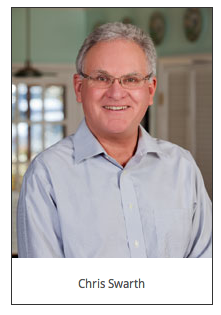Inaugural Managers to Lead New Vernal Pool Reserve
UC Merced has hired two experienced leaders to help create a natural reserve out of the open land adjacent to campus, and share management duties.
Steve Shackelton, former National Parks Service leader and chief ranger in Yosemite, began work this fall. He will co-manage the planned reserve with Chris Swarth, an ornithologist and wetlands ecologist who spent more than 20 years managing the Jug Bay Wetlands Sanctuary in Maryland. Swarth begins work in January.
 The Sierra Nevada Research Institute oversees the reserve on behalf of the campus, and will take the lead on seeking inclusion in the University of California's Natural Reserve System.
The Sierra Nevada Research Institute oversees the reserve on behalf of the campus, and will take the lead on seeking inclusion in the University of California's Natural Reserve System.
Shackelton and Swarth will expand the reserve's business plan and develop detailed outreach programs so students and community members can have supervised access to the grasslands and the pools that form after winter rains and flourish in the spring, only to dry up as the weather warms.
“Their skills complement each other wonderfully, and will provide the stewardship for these precious vernal pools and the grasslands adjacent to the campus,” SNRI Executive Director David Hosley said of the two men.
In 2001, the vernal pool land was set aside as part of the more than $11 million grant that provided land for the UC Merced campus through the David and Lucile Packard Foundation.
The preserved land was part of the 7,030-acre Virginia Smith Trust parcel. The grant arrangement included creation of the 5,030-acre conservation preserve of sensitive vernal pool habitat and facilitated creation of a 750-acre UC natural reserve for scientific study in rolling ranchland northeast of the city.
 The agreement also triggered the release of $15 million in state-approved habitat acquisition funds from the Wildlife Conservation Board to ensure the conservation of key wetland and vernal pool resources in the surrounding area.
The agreement also triggered the release of $15 million in state-approved habitat acquisition funds from the Wildlife Conservation Board to ensure the conservation of key wetland and vernal pool resources in the surrounding area.
An additional gift of $2 million in 2002, by the William and Flora Hewlett Foundation, has helped maintain the habitat and will now help with the active management of the land.
Becoming part of the UC Natural Reserve System means the land would be part of a system of more than 30 reserves across California used by students, faculty and other researchers to study the natural systems and processes of the diverse environments.
“It is a unique conservancy area for California, and we want this to be a community resource, as well,” Bales said. “We want the community to be able to view these rich and beautiful ecosystems and learn about the birds, plants and vernal pool fauna.”
In addition to sharing the vernal-pools-management job, Shackelton will work with management Professor Erik Rolland on a range of projects related to national and international conservation of parks and protected lands, including models of sustainability for California's state parks and conservation of open space in Asia and other parts of the world.
Swarth, who has been a research ecologist and biology instructor since 1979, will teach part time, as well, in the School of Natural Sciences. He taught biology at UC Berkeley, and served as a part-time faculty member in the Johns Hopkins University, Kreiger School of Advanced Academic Programs.
The UC Natural Reserve System is a network of protected natural areas throughout California. Its 38 sites include more than 750,000 acres, making it the largest university-administered reserve system in the world. Before UC Merced’s reserve can be included, the reserve board must give the OK, and the UC Board of Regents must also approve the plan.
It could be a year or more before the plan is approved.
